Ski: 2024-2025 Moment Wildcat, 184 cm
Test Location: Crested Butte Mountain Resort, CO
Days Skied (total between both lengths): ~30
Available Lengths: 164, 174, 179, 184, 190, 196 cm
Blister’s Measured Tip-to-Tail Length (straight-tape pull): 181.9 cm
Stated Weight per Ski: 2190 grams
Blister’s Measured Weight per Ski: 2163 & 2166 grams
Stated Dimensions: 141-116-131 mm
Blister’s Measured Dimensions: 143.1-116.4-133.6 mm
Stated Sidecut Radius (184 cm): 25 meters
Measured Tip & Tail Splay (ski decambered): 67.5 mm / 66.5 mm
Measured Traditional Camber Underfoot: 7 mm
Core Materials: poplar/ash + carbon & fiberglass laminate
Base: carbon-infused sintered 7500 series UHMWPE
Factory Recommended Mount Point: -5.65 cm from center; 85.3 cm from tail
Boots Used: Tecnica Mach1 LV & MV 130, Atomic Hawx Ultra 130 S GW, K2 Recon 140 BOA, Atomic Redster CS 130, Lange Shadow 130 LV
Bindings Used: Salomon Warden 13 MN, Tyrolia Attack 13 MN
[Note: Our review was conducted on the 21/22 184 cm Wildcat and 23/24 190 cm Wildcat. The Wildcat returned unchanged for 24/25, except for the graphics.]
Ski: 2024-2025 Moment Wildcat, 190 cm (click to expand specs)
Blister’s Measured Tip-to-Tail Length (straight-tape pull): 187.8 cm
Stated Weight per Ski: 2290 grams
Blister’s Measured Weight per Ski: 2371 & 2375 grams
Stated Dimensions: 143-118-133 mm
Blister’s Measured Dimensions: 142-117.5-133 mm
Stated Sidecut Radius (190 cm): 27.0 meters
Measured Tip & Tail Splay (ski decambered): 63.5 mm / 68 mm
Measured Traditional Camber Underfoot: 6 mm
Factory Recommended Mount Point: –5.9 cm from center; 88.1 cm from tail

Intro
From the Bibby to the Blister Pro and Wildcat, this ski has had a handful of names over the years (see this article for the whole story). But one thing that has remained the same is its relevance here at Blister — since even before Blister existed, we’ve been skiing, referencing, and talking about this ski.
At the start of the 18/19 season, the Wildcat’s construction changed, and the ski got notably lighter, resulting in some tangible changes to the ski’s on-snow performance. But for 20/21, the Wildcat received another construction update and got some of its weight back, with reports that it had returned to its “playful charger” origins. These changes carried over through 24/25, and after posting our Full Review of the 184 cm a couple seasons ago, we’ve now updated this post with our thoughts on the 190 cm version. But before we get into our Full Review below, let’s go over some details about the latest Wildcat.
What Moment says about the Wildcat:
“By now we’re sure you’ve heard time and again from someone who picked up a pair for the deep days only to run them as a daily driver, or about how they bought them for their playfulness only to find more composure at speed in chop than their “big-mountain” skis—they’re not wrong. Just don’t up and take that straight to the bank. We hear ‘em and we feel the same way, we’re just not gonna go so far as to recommend them as your daily driver. We’re told that when you love something, you should let it go, and if that means letting people discover how good the Wildcat is in conditions no powder ski should be subjected to—how it’ll rail hardpack like a baddy, stomp switch landing in the park, and surf pow all in the same lap—then who are we to try and keep it under lock and key? The Wildcat got loose from the pow ski box we put it in on day one—clearly it ain’t coming home anytime soon. It is a Wildcat for chrissakes, not a domesticated feline, so don’t blame us when we don’t try and rein it in. Just so we’re clear though: The Wildcat is a powder ski. Nothing more, nothing less. What you do with it is your business. We won’t try to stand in your way.”
— Moment
Shape / Rocker Profile
Since the OG Moment Bibby was released well over a decade ago, the shape of this ski hasn’t really changed (apart from 13/14–14/15, when it bumped up to 120 mm underfoot, but afterward, returned to the same silhouette).
The Wildcat has a bit of early taper at the tips and tails but, compared to many modern skis this wide, the Wildcat’s tips and tails don’t taper all that much. To be more specific, the Wildcat has notably less tip and tail taper than a lot of the other skis that we’d classify as “playful pow skis,” and its degree of taper falls more in line with more traditional, directional skis.
But where it differentiates itself from those more directional skis is in its rocker profile. The Wildcat has a lot of tip and tail rocker, and a fully twinned tail that has basically as much splay as the tip.
In today’s market, the Wildcat’s mix of minimal tip and tail taper and substantial tip and tail rocker stands out more than ever. And this could certainly help explain the Wildcat’s unique feel on snow.
Flex Pattern
Here’s how we’d characterize the flex pattern of the 184 cm Wildcat:
Tips: 7-7.5
Shovels: 8-9
In Front of Toe Piece: 9-10
Underfoot: 10
Behind the Heel Piece: 10-8.5
Tails: 8-7
And here’s how we’d characterize the flex pattern of the 190 cm Wildcat:
Tips: 7.5-8
Shovels: 8.5-9
In Front of Toe Piece: 9-10
Underfoot: 10
Behind the Heel Piece: 10-9
Tails: 8.5-7
This flex pattern is very similar to the older Wildcats / Bibbys, with one notable exception. The 20/21–24/25 Wildcat’s tips and tails are notably stiffer, and you can actually see that the core profile of the newer Wildcat is thicker near the ends of the ski, relative to the older Wildcats / Bibbys. The previous Wildcat was already quite stiff through most of the cambered portion of the ski, and the latest version maintains that while also being stiffer in the rockered portions, making for an overall quite strong ski.
Compared to other freestyle-oriented pow skis, the Wildcat remains one of the stiffer options out there. And while the 184 cm and 190 cm Wildcat have very, very similar flex patterns, the 190 cm length does feel a bit stiffer near the ends of the ski.
Mount Point
At about -6 cm from true center, the Wildcat has a mount point that is pretty similar to many other freestyle-oriented powder skis out there. Despite that, a wide variety of our reviewers get along really well with the ski, including those who tend to prefer pretty traditional, directional skis.
Weight (and Comparisons)
The Wildcat’s weight has been a hot topic over the last few years, and was one of the most notable changes when the latest (20/21–24/25) iteration was first released. The last (18/19-19/20) version of the 184 cm Wildcat weighed in at about 2056 grams, while this latest version of the 184 cm Wildcat comes in at around 2165 grams per ski. The 11/12 Bibby came in at 2190 grams in the 184 cm length, so this newest Wildcat is quite similar in that regard.
For reference, below are some of our measured weights (per ski in grams) for some notable skis. As always, keep in mind the length and width differences to try to keep things more apples-to-apples.
1802 & 1819 Line Vision 114, 183 cm
1808 & 1809 Line Pescado, 180 cm
1820 & 1835 ARV 116 JJ UL, 185 cm
1826 & 1845 Salomon QST X, 178 cm
1854 & 1903 Whitedot Ragnarok 118 Carbonlite, 190 cm
1859 & 1864 Ferreol Surfeur 112, 184 cm
1870 & 1895 Faction La Machine 5, 186 cm
1885 & 1914 Moment Wildcat Tour, 190 cm
1895 & 1906 Folsom Trophy Carbon, 188 cm
1927 & 1928 Head Oblivion 116, 181 cm
1938 & 2008 Volkl Blaze 114, 184 cm
1941 & 1989 Atomic Bent Chetler 120, 192 cm
1947 & 1981 Faction La Machine 5, 192 cm
1948 & 1957 RMU Professor 111, 188 cm
1973 & 1997 Salomon QST X, 184 cm
1998 & 2024 Head Oblivion 116, 189 cm
1998 & 2026 Armada ARV 112, 185 cm
2000 & 2047 Salomon S/Lab QST Blank, 178 cm
2008 & 2049 Black Crows Corvus, 186.2 cm
2011 & 2023 Dynafit Tigard 114, 188 cm
2013 & 2099 Moment Wildcat, 184 cm (18/19–19/20)
2026 & 2118 Icelantic Nomad 112, 188 cm
2028 & 2112 Heritage Lab Ultra Taper 132, 200 cm
2043 & 2046 4FRNT Inthayne, 188 cm
2060 & 2075 4FRNT Hoji, 184 cm
2067 & 2093 J Skis Best Friend, 184 cm
2070 & 2103 K2 Reckoner 110, 184 cm
2072 & 2092 Peak 110 by Bode, 188 cm
2078 & 2091 Faction Studio 3, 184 cm
2078 & 2131 Moment Countach 110, 188 cm
2082 & 2089 Blizzard Rustler 11, 186 cm
2083 & 2137 Blizzard Hustle 11, 188 cm
2086 & 2088 Nordica Unleashed 114, 186 cm
2086 & 2125 RMU Apostle 114, 184 cm
2117 & 2132 Atomic Maverick 115 CTi, 185 cm
2123 & 2140 WNDR Alpine Reason 120, 191 cm
2127 & 2161 RMU Professor 121, 188 cm
2147 & 2286 Prior CBC, 184 cm
2163 & 2166 Moment Wildcat, 184 cm
2173 & 2204 4FRNT Renegade, 191 cm
2174 & 2187 Moment Wildcat, 190 cm (18/19–19/20)
2176 & 2185 K2 Reckoner KF, 184 cm
2180 & 2195 DPS Koala 111, 184 cm
2181 & 2190 Parlor McFellon Pro, 185 cm
2183 & 2258 DPS Koala 118, 189 cm (21/22–23/24)
2196 & 2211 Rossignol Sender Free 110, 184 cm
2216 & 2246 Meier Leeper, 185 cm
2238 & 2257 Head Kore 118 Ti, 184 cm
2240 & 2250 Volkl Revolt 121, 184 cm
2243 & 2287 Salomon QST Blank, 186 cm (21/22–24/25)
2259 & 2279 Black Crows Anima, 189.2 cm
2259 & 2326 J Skis Best Friend, 191 cm
2260 & 2293 Line Bacon 115, 188 cm
2277 & 2295 Armada ARG II UL, 187 cm
2288 & 2291 Volkl Revolt 114, 184 cm
2288 & 2301 Folsom Rapture , 192 cm
2318 & 2322 Line Blade Optic 114, 186 cm
2318 & 2377 Prior Northwest 116, 190 cm
2322 & 2322 Dynastar M-Free 108, 192 cm
2323 & 2352 Moment Chipotle Banana, 193 cm
2328 & 2370 Rossignol Sender Free 110, 191 cm
2334 & 2353 ON3P Billy Goat 118, 186 cm
2341 & 2357 Dynastar M-Free 118, 189 cm (18/19–23/24)
2343 & 2360 J Skis Friend, 189 cm (18/19–23/24)
2343 & 2376 Folsom Rotor, 193 cm
2371 & 2375 Moment Wildcat, 190 cm
2420 & 2576 Heritage Lab HB122, 189 cm
2423 & 2446 K2 Reckoner 124, 189 cm
2438 & 2492 Rossignol Blackops 118, 186 cm (19/20–23/24)
2445 & 2498 Dynastar M-Pro 108, 192 cm
2457 & 2533 Rossignol Sender Free 118, 186 cm
2534 & 2543 Heritage Lab FR110, 193 cm
2566 & 2580 Folsom G-Wagon, 192 cm
FULL REVIEW: 184 cm Moment Wildcat
From the Bibby to the Wildcat we know today, Moment has made some changes to this ski over the years, but never strayed super far from the model that we really, really liked. Below is our review of the 184 cm, which we first published in 2023, and now we’ve added a new section after spending a lot of time on the 190 cm. Let’s start with the shorter of the two:
Powder
Dylan Wood (5’10.5”, 155 lbs / 179 cm, 70 kg): At 116 mm wide, you’d be hard pressed to find anyone who doesn’t consider this a powder ski. And in powder, the 184 cm Wildcat certainly feels at home.
Whether pointing it down the fall line or making slower, more frequent, pivot-y turns, the 184 cm Wildcat offers pretty good flotation. Its tips do a pretty good job of staying above the snow surface from a more centered or slightly forward stance. When you need / want to shut it down and throw the Wildcat sideways, though, it’s pretty happy to do so, and has a fairly loose feel in deep snow. This certainly isn’t the surfiest ski in powder, but it never feels locked into a turn or straightline in pow.
With its relatively long radius and stiff flex pattern, the Wildcat doesn’t feel like it bends or deforms much in powder. This means that it doesn’t offer best-in-class flotation in deep snow, given that its tips and shovels don’t flex that much, but the Wildcat feels strong and predictable in powder. Whether you are pointing the ski straight downhill through or making aggressive slashes in untracked snow, the Wildcat never feels hooky or unpredictable — a very appreciable trait.
While I would categorize this as a pow ski, I’d also say that its flotation isn’t the best for a ~115 mm wide ski. Rather, it’s impressively versatile when the fresh snow gets skied out.
Luke Koppa (5’8”, 155 lbs / 173 cm, 70 kg): Agreed. Our reviewer up in Alaska, Paul Forward, has often said that the Wildcat / Bibby isn’t the best for its width when it comes to pure flotation, and while I’d definitely agree with his take and Dylans, I also like to point out that, for pretty much all the resort skiing I do in Colorado, the 184 cm Wildcat floats just fine. It doesn’t get bogged down easily, will plane up with some speed, and remains very easy to throw sideways at a moment’s notice. It’s not what I’d pick for mellow glade skiing in ultra-deep snow, but what makes it really stand out is how it performs after all the fresh snow has been cut up and tracked out.
Soft Chop
Dylan: The Wildcat / Bibby has been known as a chop-destroying ski, and the current iteration seems to carry that torch well.
Stiff and fairly heavy, the Wildcat does a good job of blasting through piles of chop. There are certainly some even more damp and composed options out there (e.g., the 186 cm Rossignol Blackops 118), but the 184 cm Wildcat differentiates itself by offering impressive stability while still feeling fairly quick and maneuverable.
It also feels versatile in terms of the styles it can be skied with. Point it right through piles of cut-up snow, and the Wildcat does a good job of staying on track and not bucking you around very much. But if you’d prefer to pop, slash, and pivot around through chop, the Wildcat is happy to do that as well. Some skis that are notorious for being chop-destroyers can feel sluggish and “dead” when you’re not pushing your limits in terms of speed and aggression, but the 184 cm Wildcat feels more energetic and lively than it does damp and smooth — without getting deflected a whole bunch in soft chop. We’ve historically referred to the Wildcat as a “playful charger,” and this newest version most definitely still fits that mold.
Luke: As soon as we heard that Moment had built the Wildcat a bit heavier, following its lighter 18/19–19/20 years, soft chop is where I really wanted to test the new ski. And it did not disappoint.
While I haven’t skied the 184 cm length of the original-construction Bibby / Blister Pro, I can confidently say that the current Wildcat feels a lot more stable than the lighter, 18/19–19/20 version of the ski. Even though it’s not super heavy, the latest Wildcat stays very composed when skiing hard and fast in soft chop. As Dylan noted, there are some skis that feel smoother and/or calmer when really nuking through cut-up snow (especially if it’s denser / more set-up), but the Wildcat remains in the upper echelon of powder skis when it comes to composure in soft chop. I can’t think of many scenarios when I was skiing soft chop on the 184 cm Wildcat and found myself thinking it was lacking in composure.
However, as Dylan noted, the Wildcat is still fairly easy to ski. Yes, it’s pretty stiff and fairly heavy, so it doesn’t feel super engaging at very low speeds. But it is still very easy to release and slash around (which is very useful when you need to shed speed), and despite being fairly hefty, the current 184 cm Wildcat doesn’t feel all that sluggish. So not only did Moment return it to its chop-busting ways, but they also maintained the versatility that made the original so fun — impressively stable, but still quite maneuverable and playful.
Moguls, Trees, and Tight Terrain
Dylan: While it’s not the loosest / surfiest pow ski on the market, the 184 cm Wildcat still feels comfortable and capable in tight terrain. As I mentioned earlier, this ski offers very respectable stability, but it doesn’t come in at an extremely hefty weight. In tight terrain, its moderate swing weight helps keep this ski feeling quick and maneuverable where heavier pow skis can feel sluggish.
Whether you’d prefer to slide and slarve around or let the ski run down straight down the fall line, the Wildcat feels comfortable in both situations. It is fairly easy to pivot through tight terrain, though not particularly forgiving of backseat skiing — its stiff tails can certainly stand you up and punish you for poor technique. Softer pow skis (e.g., Armada ARV 116 JJ) can be more forgiving in tight terrain and big moguls, but the Wildcat is pretty maneuverable while also being pretty strong and powerful, catering to a wide variety of skiers.
Luke: Yep. As I noted above, the Wildcat isn’t what I’d choose if I knew I was going to stick to mellow-angle, tight terrain. Its stiff flex pattern, fairly heavy weight, and long sidecut radius all cater to more aggressive skiing. But especially in somewhat steep terrain with lots of bumps or trees (and ideally, soft-ish snow), it feels quite maneuverable — particularly when you consider how composed it feels at speed in more open terrain. If you can keep some momentum going, the Wildcat feels fairly agile for its size.
Groomers
Dylan: With a stated sidecut radius of 25 meters for the 184 cm length, it could be assumed that the Wildcat is not a fun carver and takes tons of speed to get on edge and arc across the fall line. In reality, I found the Wildcat to be a surprisingly enjoyable carver.
Sure, it’s not the greatest pow ski for those who really prioritize enjoying the inevitable groomer on soft snow days (the Line Pescado is probably the best in this regard), but the Wildcat can still be tipped over into GS turns and enjoyed on groomers. Its stiff forebody and moderately heavy weight also help it blast through piles of pushed-around snow that are common on groomers during a pow day.
Luke: Groomer performance probably isn’t a big priority for most folks when they’re looking for their next pow ski, but I agree with Dylan in that the Wildcat is very predictable on piste. It’s not a ski that makes me eager to really lay over turns on groomers, but for its size and class, the Wildcat offers very good edge hold and stability on smooth, firm snow. Especially if you find yourself on a wide, long, steep slope that lends itself to bigger turns, the Wildcat can be a lot of fun to carve.
Firm Crud
Dylan: I wouldn’t say the 184 cm Wildcat stands out for having excellent suspension — there are heavier skis that outperform it when it comes to how smooth / plush / damp they feel. Still, when the pow gets skied out or you come across some scraped-off sections, the Wildcat’s versatility continues to shine.
The Wildcat offers good edge hold, remains maneuverable on firm snow, and still stays quite stable when the fresh snow firms up. This makes the Wildcat a good option for folks looking to take out a wide ski on days after a storm, or other situations where you might not always be skiing deep and/or soft snow. On days where it isn’t necessarily a pow day but a rope drop might occur somewhere on Mt. CB, I often took out the Wildcat — it let me enjoy soft, deep, untracked snow, but also didn’t feel very out of place when there was no more fresh snow to be had.
That being said, in really nasty conditions, such as refrozen crud, bulletproof ice, etc., a narrower, heavier ski (e.g., Volkl Mantra 102) feels much smoother and more enjoyable. The Wildcat strikes me as a great option for the following 2-3 days after a storm, but not exactly a daily driver for those high-pressure, mid-winter days (Moment makes the narrower Wildcat 108 and Wildcat 101 for that).
Luke: Dylan provides some useful context here — while we’ve emphasized the 184 cm Wildcat’s versatility, it’s still a ~116mm-wide ski, and no ski of that size is ever going to feel amazing in really firm, rough snow. The 184 cm Wildcat feels pretty damp and stable when skiing firmer crud, but piloting a ski that’s this wide, stiff, and heavy through firm, bumpy snow still takes a toll on my knees and legs.
As far as suspension goes, I’d say the 184 cm Wildcat is quite good for its class, but it doesn’t feel like some ultra-plush ski that absorbs every little impact and vibration. Think of the Wildcat as a mountain bike with its suspension set up for racing — optimized for support and composure at speed, not maximum comfort while taking it easy.
Still, what I appreciate about the Wildcat is that it remains predictable just about everywhere. It doesn’t completely erase every little inconsistency in the snow, but it also doesn’t behave erratically when the soft snow runs out, which can’t be said of all (most?) skis this wide. So, as Dylan noted, I view the Wildcat as an excellent option for storm days and the few days that follow where you’re looking for stashes but skiing a fair bit of firm / cruddy snow to get there.
Playfulness
Dylan: We often call the Wildcat a “playful charger,” and I think that’s a good categorization of the ski. Both freestyle-oriented and more directional skiers have reason to check out the Wildcat, though there are definitely more playful options out there.
To be clear, the Wildcat is playful in many aspects. It skis switch very well, feels balanced in the air, and is a fairly surfy / loose powder ski. But there are lots of even looser powder skis out there, and the Wildcat is also pretty stiff, making it less ideal than something like the Line Outline for butters and presses.
Luke: The Wildcat seems very well suited to the freestyle-minded skier who’s primarily focused on bigger terrain, rather than making the most of smaller, lower-speed hits. Its mount point, shape, and rocker profile are all well suited to getting in the air, spinning, and skiing switch, but its strong flex pattern and long sidecut radius keep it from feeling super engaging at slow speeds. So I wouldn’t get the Wildcat if you’re looking to butter and slash every little roller, but if you want something that feels composed in chopped-up in-runs and runouts, while still feeling balanced in the air, it’s an excellent choice. It’d be one of my top picks if I were to enter a big-mountain freeride competition, but not for something like jibbing around in the forests of Japan.
FULL REVIEW: 190 cm Moment Wildcat
After we posted our review of the 184 cm length of this ski, we’ve had several reviewers testing the longer 190 cm length. Most of what we said above applies to both lengths, so if you haven’t already, be sure to read the above section on the 184 cm length. But below, we’ll dive into some of the details that separate the two lengths of this playful charger.
For now, Dylan Wood and Luke Koppa will be chiming in with their thoughts. We’re all pretty much in agreement on both lengths of this ski, but Jonathan Ellsworth, who has a long history with the Bibby / Blister Pro / Wildcat, will be adding his take in the near future (as of publishing this, he’s currently busy at the FIS World Cup Finals in Sun Valley).
Powder
Dylan Wood (5’10.5”, 160 lbs / 179 cm, 72.5 kg): For context, my only experience with the Wildcat (and any other previous versions) was when I reviewed the 184 cm length a couple of seasons back. So, going into my time on the 190 cm Wildcat, my experience with the shorter length is my only frame of reference. Unlike, ahem, some other reviewers here at Blister, I don’t have any strong feelings about what the 190 cm Wildcat should or should not be, other than the general thought that it better be good, based on what Jonathan and others have said about it over the years. With that in mind…
I have a much easier time categorizing the 190 cm Wildcat as a true powder ski than I do with the shorter 184 cm length. The 190’s slight increase in width (118 mm vs. 116 mm underfoot) and, more importantly, increase in length makes a significant difference when it comes to flotation in soft snow.
I got the 190 cm Wildcat out on some deep days, up to ~1-2 feet (~30-61 cm) of fresh snow, and it floats really well from both a more centered and more forward stance. With the shorter 184 cm length, I found myself sometimes feeling like I was going to go “over the bars” due to not having enough support from the front of the ski in powder. With the 190 cm length, I never got this sensation. I was always able to drive the front of the Wildcat and ski from the balls of my feet in powder when I wanted to, regardless of how steep a run I was on.
The 190 cm Wildcat still offers a surprisingly surfy ride in soft snow. At moderate speeds, it isn’t very hard to throw sideways, and its relatively straight shape also makes big, drifted turns predictable. This long sidecut also results in a ski that never feels “hooky,” or too eager to cut across the fall line. When hitting fast, soft runouts with a lot of speed, the 190 cm Wildcat predictably sheds speed without turning too much against your will. It’s not the most forgiving or easy pow ski by any means, though, and its tails can be hard to release if you’re in the backseat. But, stay over the middle of the ski or over its shovels, and it is happy to be thrown sideways.
Now, this is also a ski that benefits from some speed and momentum in powder. At slower speeds, it still remains maneuverable enough to make jump turns at a standstill. Its fairly centered mount and pretty symmetrical design definitely help keep its swing weight down, relative to its overall mass. But you have to be pretty intentional and forceful with low-speed movements; this is far from a nimble pow ski that will easily let you flick it around from your ankles in tight spots. Rather, I enjoyed the 190 cm Wildcat most when looking for steep, fairly straight lines, taking advantage of the ski’s stability in powder and large sweet spot, waiting to dump my speed until the runout.
Luke Koppa (5’8”, 155 lbs / 173 cm, 70 kg): Agreed. The one thing I’d add is that, at my size and my preferences, I tend to be just fine on the 184 cm Wildcat on most resort pow days. I do have to ski it fairly neutral / centered to avoid sinking the tips when there’s close to a foot or more of fresh snow, but especially for the tighter terrain at Crested Butte, I usually prefer the added maneuverability of the 184 cm over the added flotation and stability of the 190 cm length.
Soft Chop
Dylan: The 190 cm Wildcat stands out for how practical it remains as a powder day turns into a soft chop day. The 190 cm Wildcat offers a lot of stability in soft chop, with a very stiff platform underfoot that blasts through piles of snow very well, and a shape that is quite resistant to getting knocked off-line.
Again, this is a ski that does best with speed and momentum in soft chop. While I found myself more inclined to ski more playfully on the 184 cm Wildcat, catching air and trying to gap piles of soft snow, I enjoyed the 190 cm Fatcat the best when making big, fast turns through chop, doing my best to ski as if the piles of snow weren’t even there. Heavier, softer skis like the 186 cm Rossignol Sender Free 118 provide a smoother, more ‘plush’ ride through chop at more moderate speeds, but the strong flex pattern, length, and respectable mass of the 190 cm Wildcat make it one of the more stable skis at high speeds in soft chop I’ve personally tried.
Luke: Yep, the 190 cm Wildcat is one of my favorite options on the market if I want to ski fast and hit big features in soft, cut-up pow. It can feel sluggish if you’re making tons of short, choppy turns at slow speeds, but as long as I keep some momentum going, it doesn’t feel like much of a burden. And it’s extremely confidence inspiring at speed.
Moguls, Trees, and Tight Terrain
Dylan: The 190 cm Wildcat is certainly maneuverable relative to its stability and size, but it does take a lot of work to navigate through tight terrain. It’s pretty heavy and long, and while it’s easy to throw sideways at higher speeds, it’s not the easiest to pivot at slower speeds.
That being said, it’s pretty forgiving relative to its stability as well and isn’t too punishing of sloppy technique in tight spots, it just requires more effort than lighter, shorter powder skis like the Blizzard Rustler 11. I had no problems with the 190 cm Wildcat in tight terrain so long as I looked ahead and planned my line out 2-3 turns in advance, rather than relying on being able to react on the fly.
Luke: Exactly. The 190 cm Wildcat doesn’t cater that well to a really dynamic, light-on-your-feet approach where you’re making tons of last-second adjustments. But it’s pretty easy to pivot and slide through tight spots if you plan ahead just a bit. It’s also fairly forgiving for its size, but the less soft snow there is, the more you need to stay off its tails — this ski is quite stiff overall, and that’s more noticeable the firmer / shallower the snow is.
Groomers
Dylan: With a sidecut radius of 27 meters, deep rocker lines, and a pretty stiff flex throughout most of this ski’s sidecut, it takes a lot of speed and/or force to do anything that resembles carving on piste aboard the 190 cm Wildcat. It doesn’t provide much excitement on groomers, but is still happy to carve some big Super G turns so long as you have enough speed.
Luke: “Predictable but not exciting” is how I’d describe either length of the Wildcat on piste. Totally fine for what it is (a powder ski), but far from exhilarating.
Firm Crud
Dylan: The 190 cm Wildcat provides good enough suspension in cruddy snow to make it survivable, maybe even slightly enjoyable. It’s still a big, wide ski that is slow edge-to-edge on firm snow, but its stiff flex and significant mass help the Wildcat feel stable in firm, rough snow. Additionally, its long sidecut radius also helps it from being hooky in grabby crud or coral-reef conditions. I wouldn’t go so far as to take this ski out more than a few days after the most recent significant storm, but it handles firm crud well enough that if you happen to find yourself on a wind-scoured face on a stormy pow day, it lets you traverse these conditions without any drama.
Luke: Yep, the firmer the snow, the more I prefer a narrower ski (e.g., Moment Countach 110). But the 190 cm Wildcat stays pretty composed when encountering these conditions, to the point that I never have to worry if I end up having to get through some avalanche debris or freeze-thaw conditions during a pow day on this ski. Rather than a lack of suspension or stability, the 190 cm Wildcat’s sizable width and length just make it feel a bit cumbersome in very firm snow.
Playfulness
Dylan: The Wildcat is often referred to as a “playful charger,” and it’s definitely playful in many ways, but less so in others. It is pretty loose and surfy and gets along well with a more centered stance. And while this long ski can feel somewhat cumbersome in the air, it also feels pretty balanced during rotations and other tricks. It has a good amount of energy in it, too, and while it does require a lot of force to bend, it also returns a lot of force when you do so, allowing you to pop off its tails or take a more bouncy style through powder. This ski also has a ton of tail splay, making switch landings and takeoffs in soft snow totally possible.
All that said, its stiff flex pattern also makes slow-speed maneuvers like butters pretty difficult, and rotating this ski in any way does require some physical effort. There are plenty of more playful options out there, but for how stable the 190 cm Wildcat is, it’s hard to complain about the level of playfulness it provides. I would also suspect that the heavier / stronger of a skier you are, the more playful you’ll find it.
Luke: Agreed again. Unsurprisingly, the lighter, shorter, and slightly narrower 184 cm Wildcat generally feels a bit more playful than the 190 cm, but the scaling between lengths feels totally normal to me — the 190 cm doesn’t feel drastically less playful, more directional, etc.
Mount Point
Dylan: It’s not uncommon that I hear of folks wishing their Wildcat was mounted slightly farther back from its recommended mount point (about -6 cm from true center) to get some more flotation and support out of its tips in powder. Having tested this, I think that mounting the Wildcat 1-2 cm back does a good job of alleviating this problem, while making some pretty minor sacrifices in the realm of swing weight.
As I mentioned above, I found myself wishing for some more support out of the 184 cm Wildcat, particularly in deeper snow. I never once wished that the 190 cm Wildcat was mounted farther back — the front of the ski always supported me regardless of the terrain or snow conditions, and I enjoyed how much tail was behind me, too. So, the more of a directional skier you are, and the more that you are downsizing on the Wildcat, the more I’d recommend you consider mounting back 1-2 cm on this ski.
Luke: I get along with both lengths mounted on their recommended mount point. As I noted earlier, I have to ski the 184 cm Wildcat pretty centered in deep conditions, but the sweet spot feels big enough that I’m not inclined to move the bindings back. And on the 190 cm length, the recommended mount point strikes a nice balance of flotation, support, stability, and maneuverability. But you could move the bindings a cm or two forward or back to optimize one of those traits.
Length (and 184 cm vs. 190 cm)
Dylan (5’10.5”, 160 lbs / 179 cm, 72.5 kg): Aside from the usual considerations regarding your height, weight, and the lengths you typically like for this class, I think deciding between lengths on the Wildcat mostly comes down to the terrain you will be taking it into. I definitely had an easier time navigating steep, tight runs on the 184 cm Wildcat. But I also had more fun skiing fast through open powder fields on the 190 cm Wildcat, and also enjoyed the bigger sweet spot the longer length provided, while being more than happy to put a little extra effort into my skis in tight spots. The more I was dealing with tight runouts and needing to get creative in some trees to find good snow, the more I’d be inclined to go 184 cm. And the more I’d be skiing fast, dropping big cliffs, and skiing deep powder, the more I’d want the 190 cm Wildcat.
Luke (5’8”, 155 lbs / 173 cm, 70 kg): For reference, Dylan and I both tend to get along with powder skis ranging anywhere from 183 cm to 192 cm, depending on the specific model. With that range in mind, I’m in the same boat as Dylan in that I could get along with the 184 cm or 190 cm, with terrain being the main deciding factor for me. At a place like Crested Butte, with lots of steep, tight terrain, I generally prefer the 184 cm, but I wouldn’t hesitate to opt for the 190 cm at a mountain with more open terrain and/or deeper snow (e.g., Alyeska, Snowbird, Palisades, etc.). Rather than the 184 cm and 190 cm feeling like dramatically different skis, I feel like I just happen to fall between those two lengths, so the decision for me comes down to what I want to prioritize. For more info on how to pick the right ski length for you, whether you’re looking at a pow ski, carving setup, or something else, check out our article and video on How to Think About Ski Length.
Who’s It For?
Dylan: As I mentioned above, the Wildcat can be enjoyed by more directional and more playful skiers. It also feels quite versatile for a powder ski, and definitely doesn’t feel limited to just untracked snow. So I think the demographic of who should be looking at the Wildcat is quite broad.
It is stable and strong, allowing you to ski quite hard in powder, chop, and even crud. While it doesn’t have the smoothest, most bump-erasing suspension out there, it does bring some liveliness to the table that heavier skis can sometimes lack. And it certainly isn’t only meant for charging — it offers great maneuverability for how stable it is, keeping it enjoyable in tighter terrain. Plus, its powerful platform is also a freestyle-friendly one, and those who like to throw tricks and slash around could find a lot to like about the Wildcat.
That said, the Wildcat doesn’t offer best-in-class flotation in deep, untracked powder (especially if you ski with a very forward stance), and there are plenty of better options if you want something particularly easygoing, forgiving, and accessible at slow speeds.
Luke: Looking back at our reviews of the original Bibby / Blister Pro, much of what we said there remains true for the latest, current Wildcat. Those older versions’ ability to work for such a wide range of skiers was a big part of why we were such big fans of them; this current Wildcat continues that trend. It’s one of the more stable skis in its class, but can still be skied in a very playful manner.
I’ll echo Dylan in saying that the Wildcat wouldn’t be my top recommendation if you (1) want the absolute best flotation, (2) prefer an ultra damp, smooth, borderline “dead” ski, or (3) are looking for an extremely loose, forgiving, nimble pow ski. But if you’re looking to make the most of your resort pow days, even after the fresh snow is all chopped up, it is an excellent choice that does a lot of things well.
Bottom Line
“It’s back.”
That’s how we summed up things when we first published our review of the current 184 cm Moment Wildcat. And after a lot more time with the 190 cm, we’d say the same thing to those who were familiar with the original Moment Bibby.
With the current Wildcat, Moment has returned this ski to its original “playful charger” ways. It’s a powder ski that’s still a whole bunch of fun in chop, with impressive stability at speed, but in a package that’s also quite maneuverable and well suited to a more playful skiing style. The 184 cm feels a bit more biased toward the latter, while it’s the opposite for the 190 cm length, but both stand out from comparably sized alternatives for the same reasons.
Our Deep Dives, Winter Buyer’s Guide, & Flash Reviews
BLISTER+ members and those who purchase our Digital Access Pass can check out the Deep Dive comparisons linked below, where we compare a given ski, bike, etc. to a whole bunch of other comparable products in its class. Don’t have access? Get our Digital Access Pass to read all of our Deep Dive comparisons, as well as our Flash Reviews, where we provide our initial impressions as soon as we start testing gear.
Or, even better, become a BLISTER+ member to get that + the best worldwide Outdoor Injury Insurance, exclusive deals and discounts on skis, personalized gear recommendations from us, access to our annual Winter Buyer’s Guide, and much more.
On that note, you can also get our thoughts on this ski and 300+ others in our 2024-2025 Blister Winter Buyer’s Guide. BLISTER+ members already have access, or you can purchase the guide on its own to get the the print copy + digital version at no extra cost, or the digital-only edition.

Deep Dive: Moment Wildcat
We compare the Moment Wildcat to the previous Wildcat, Moment Bibby, Moment Wildcat Tour, Black Crows Anima, Rossignol Sender Free 118, Line Optic 114, K2 Reckoner 124, Volkl Revolt 121, Völkl Revolt 114, 4FRNT Renegade, 4FRNT Inthayne, Atomic Maverick 115 CTI, Atomic Bent Chetler 120, Nordica Unleashed 114, Line Bacon 115, Dynastar M-Free 112, Icelantic Nomad 112, Blizzard Rustler 11, Salomon QST X, Head Oblivion 116, Line Vision 114, Head Kore 117, Head Kore 118 Ti, Prior Northwest 116, DPS Foundation Koala 118, Salomon QST Blank, Dynastar M-Free 118, J Skis Friend, Line Vision 118, Season Forma, Line Outline, K2 Reckoner 112, Icelantic Nomad 115, Nordica Enforcer 115 Free, and Elan Ripstick 116.
Blister’s Flash Reviews and Deep Dives are accessible to those who purchase one of our paid subscriptions
To get our comprehensive Deep Dives and our initial, unfiltered reports on new gear, become a member and receive many other services, deals, and discounts.
If you’re already an active member, please log in.
(If you’re already logged in and a member in good standing and seeing this message in error, please refresh this page in your browser.)

2024-2025 Blister Digital Winter Buyer’s Guide
350+ skis, 65 boots, and 280+ pages of honest, accurate product reviews and comparisons. Order our 24/25 Winter Buyer’s Guide or become a BLISTER+ member to read the Digital Guide NOW.
If you’re already a Blister Member or have purchased the 24/25 Winter Buyer’s Guide and are seeing this message, please log in and then refresh this page.
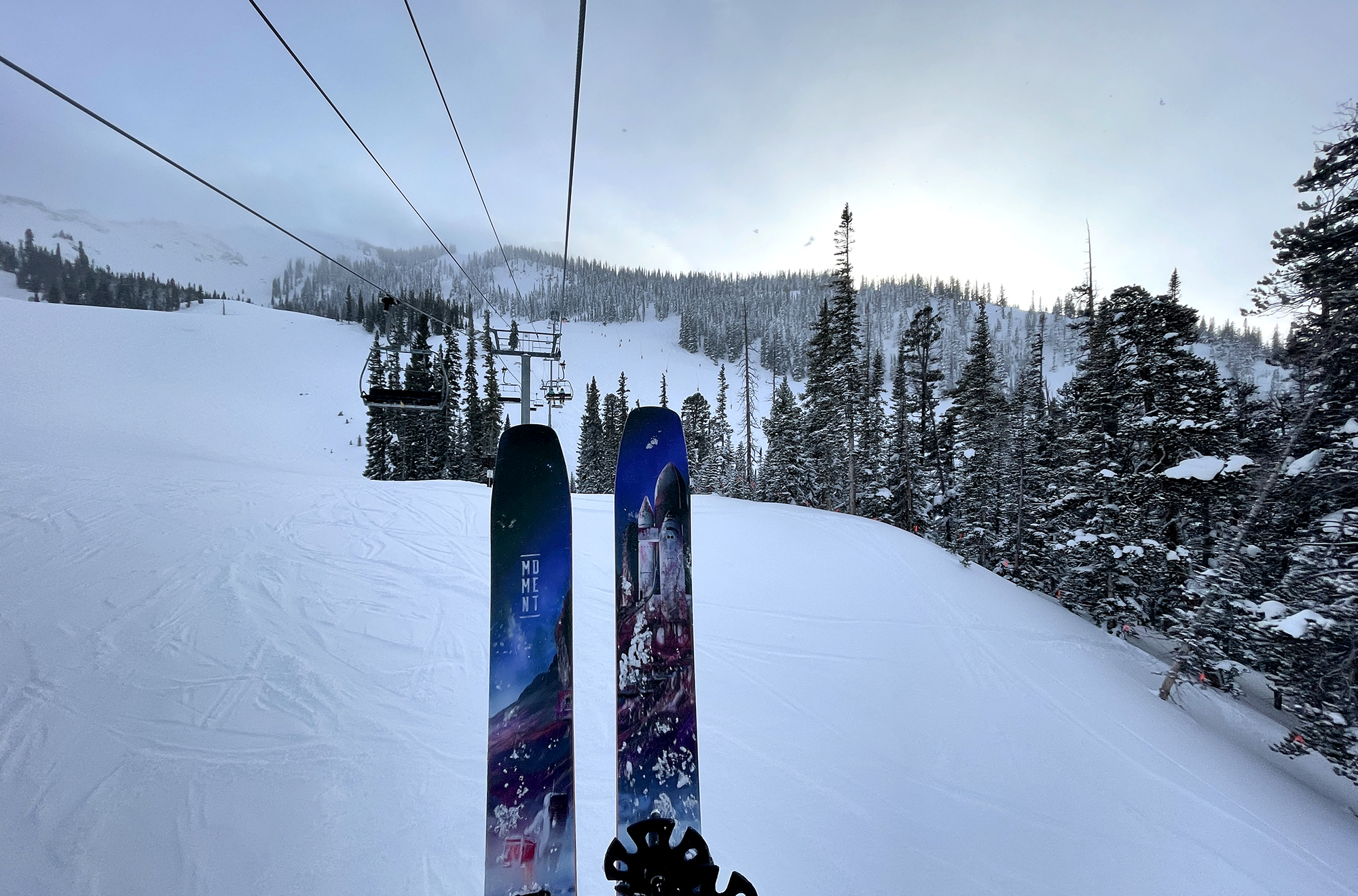
Flash Review: 21/22 Moment Wildcat
Moment says that the latest Wildcat is much more similar to the original Bibby / Blister Pro than before, so, is it? Check out our initial thoughts after a couple days of skiing the 21/22 Wildcat.
Blister’s Flash Reviews and Deep Dives are accessible to those who purchase one of our paid subscriptions
To get our comprehensive Deep Dives and our initial, unfiltered reports on new gear, become a member and receive many other services, deals, and discounts.
If you’re already an active member, please log in.
(If you’re already logged in and a member in good standing and seeing this message in error, please refresh this page in your browser.)

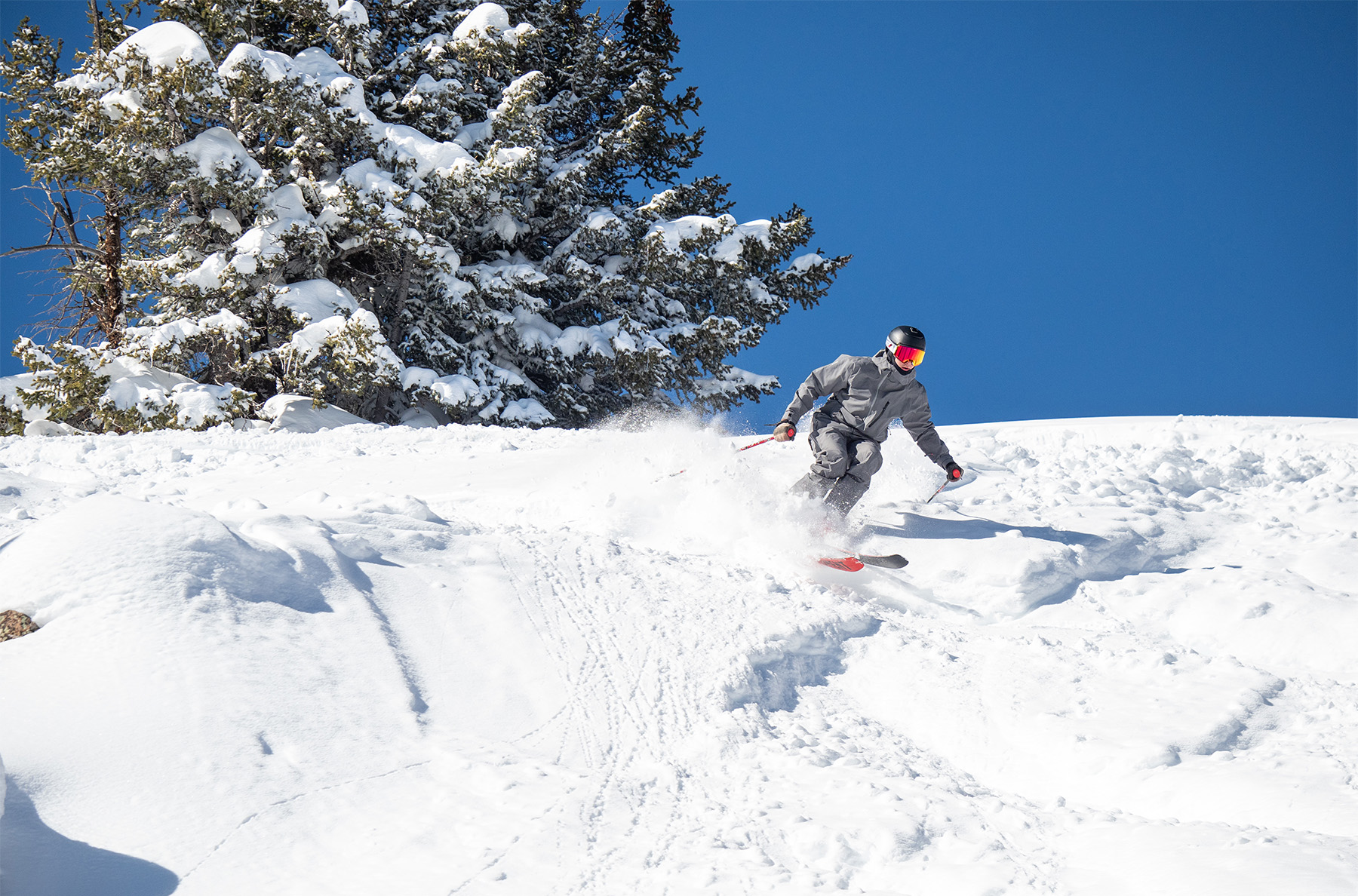

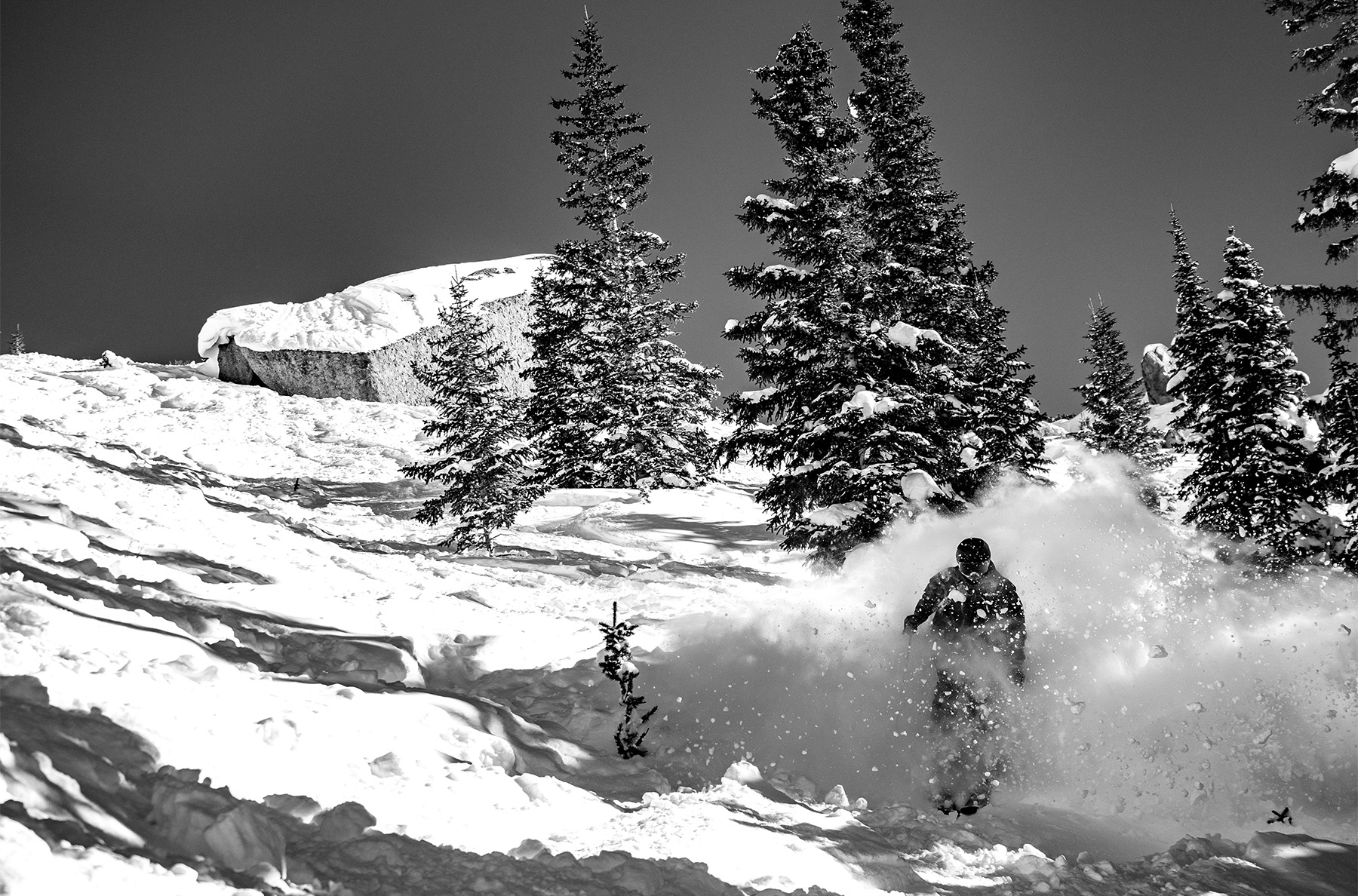
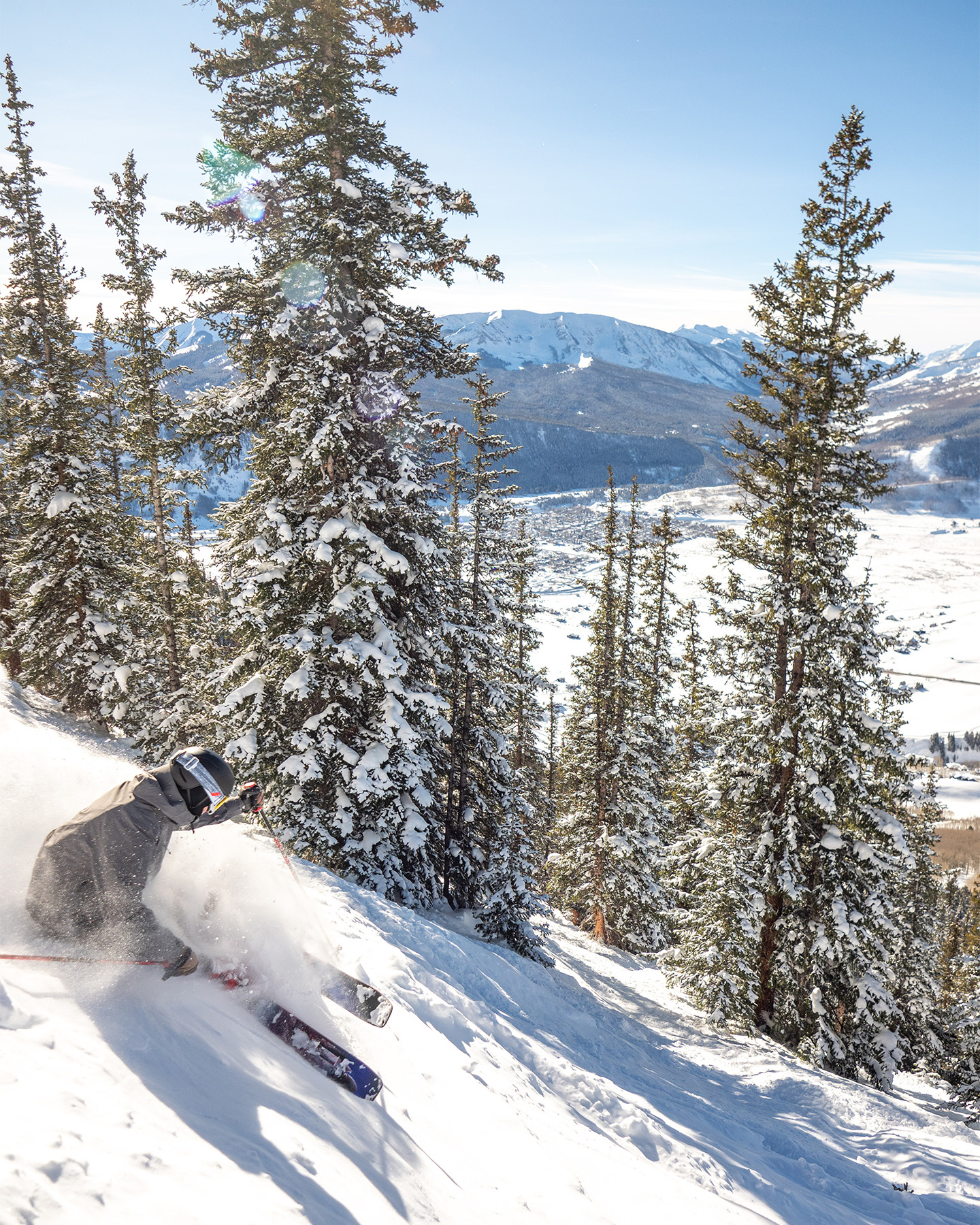

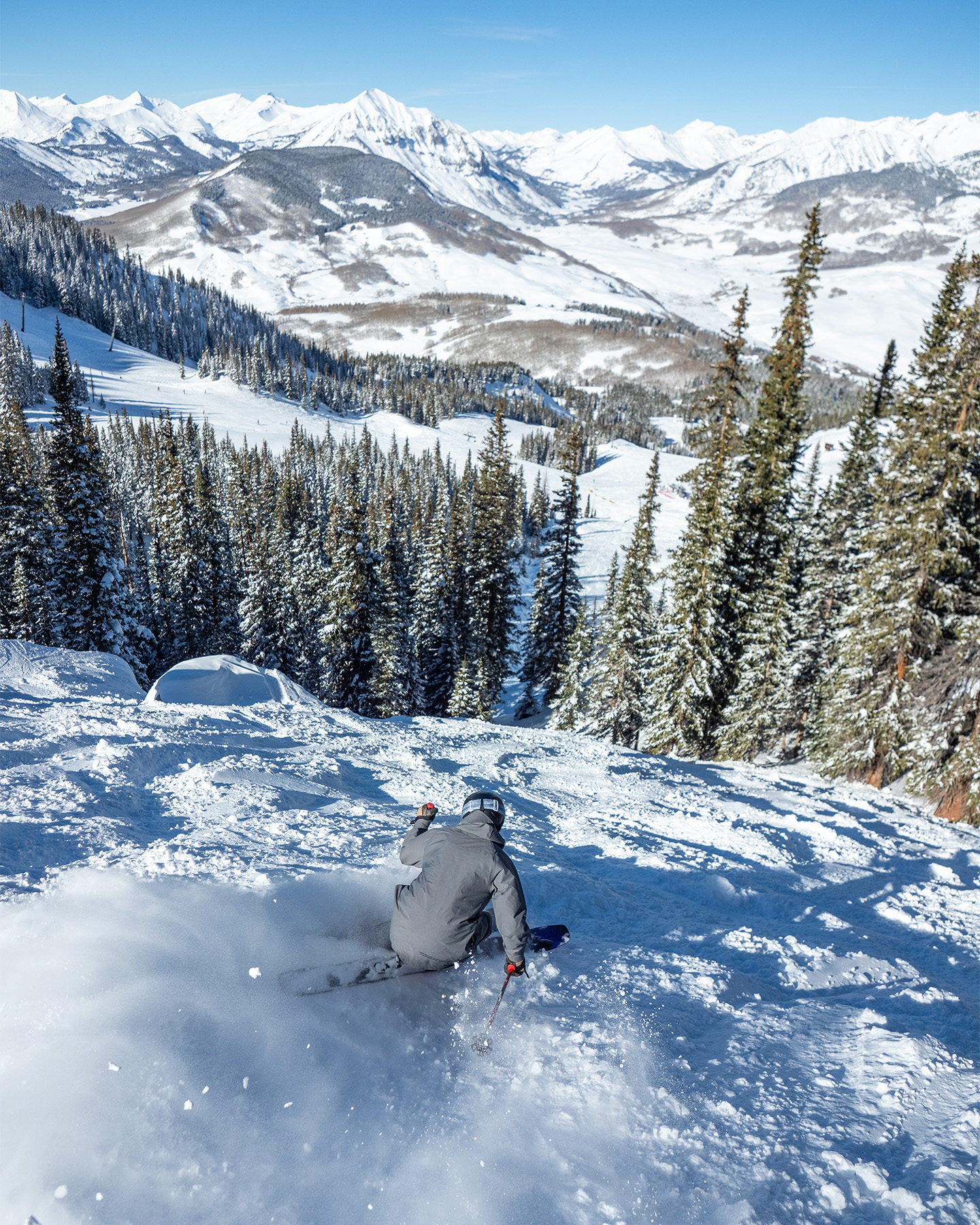
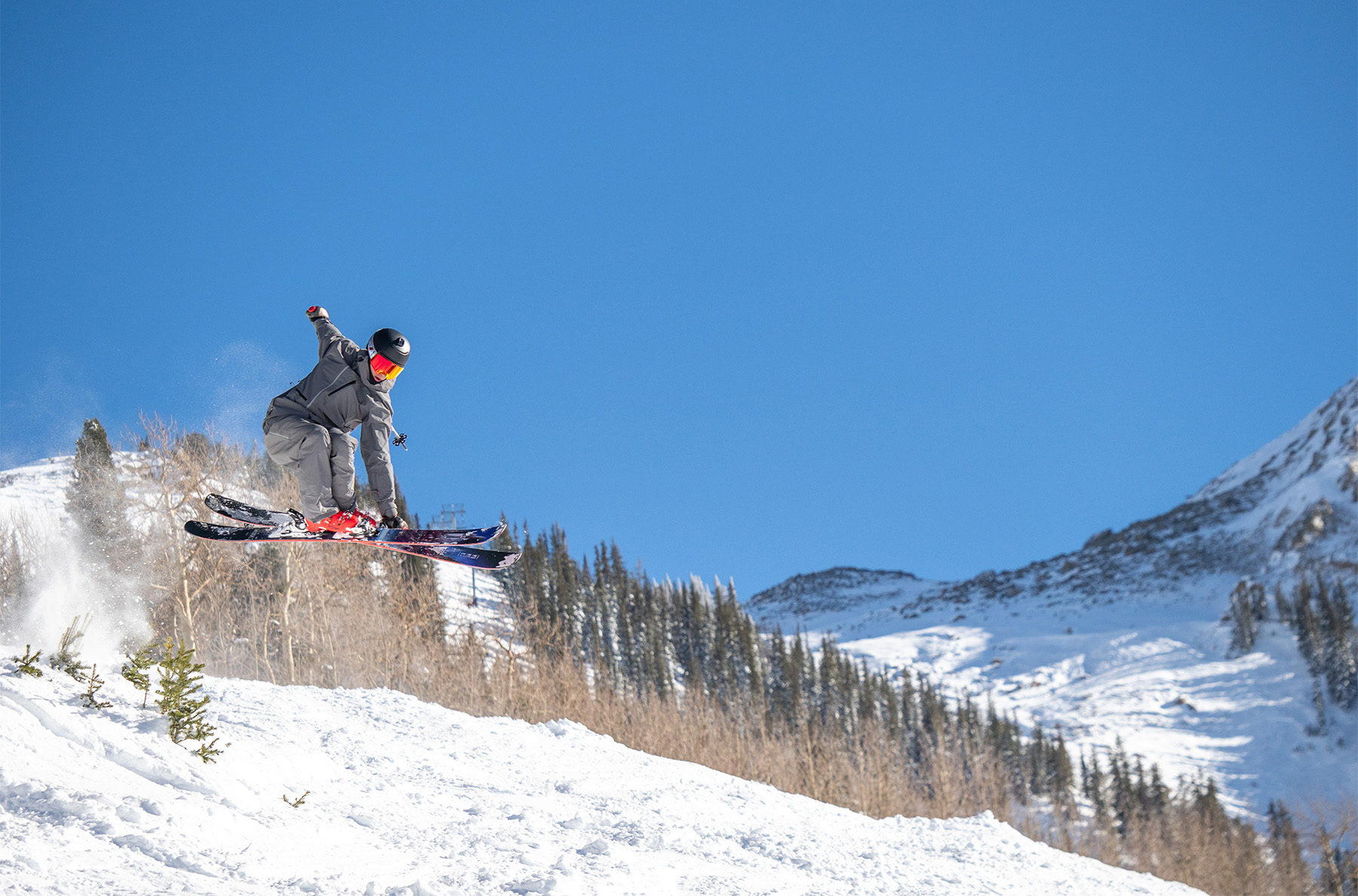
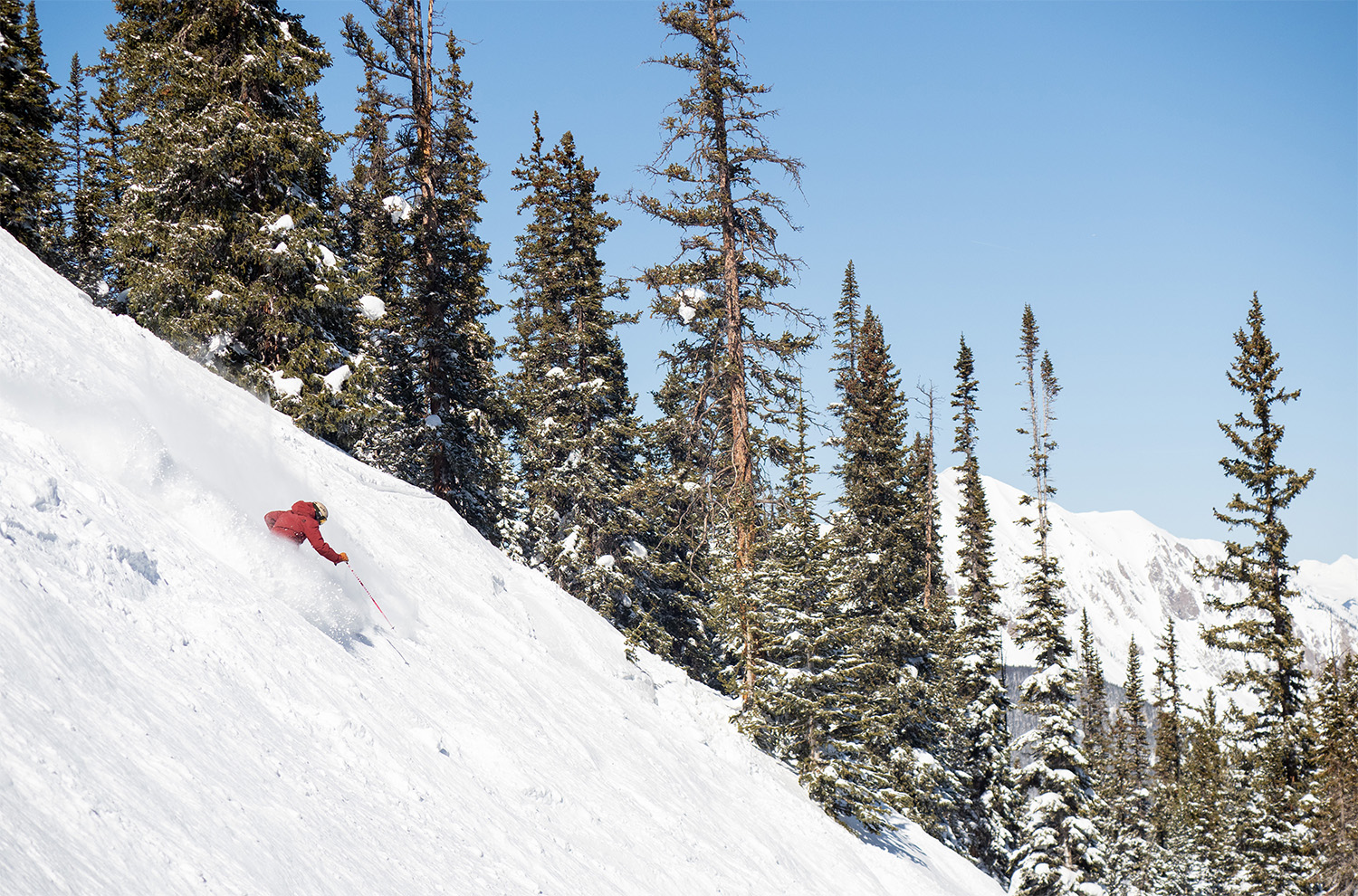
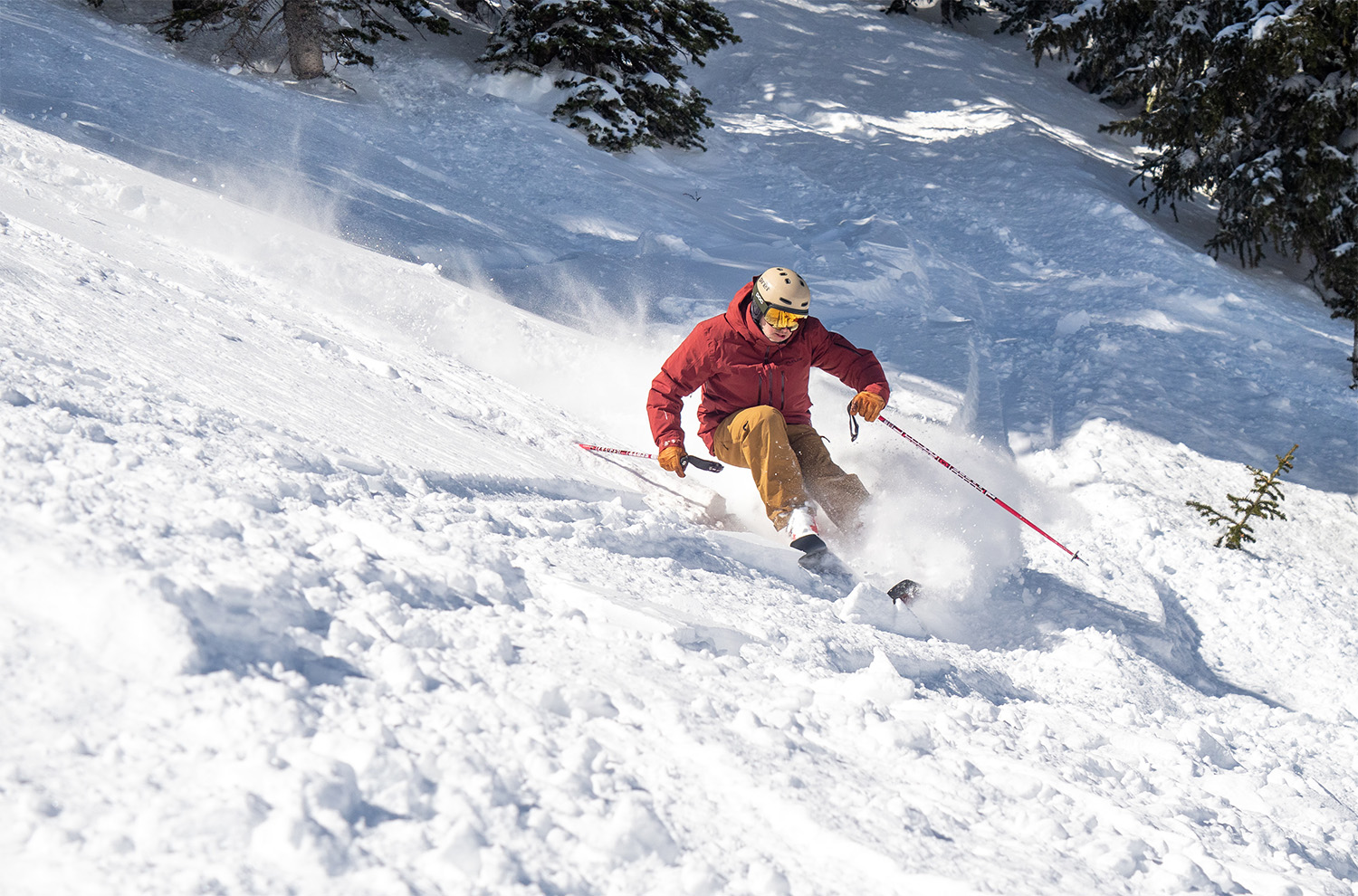
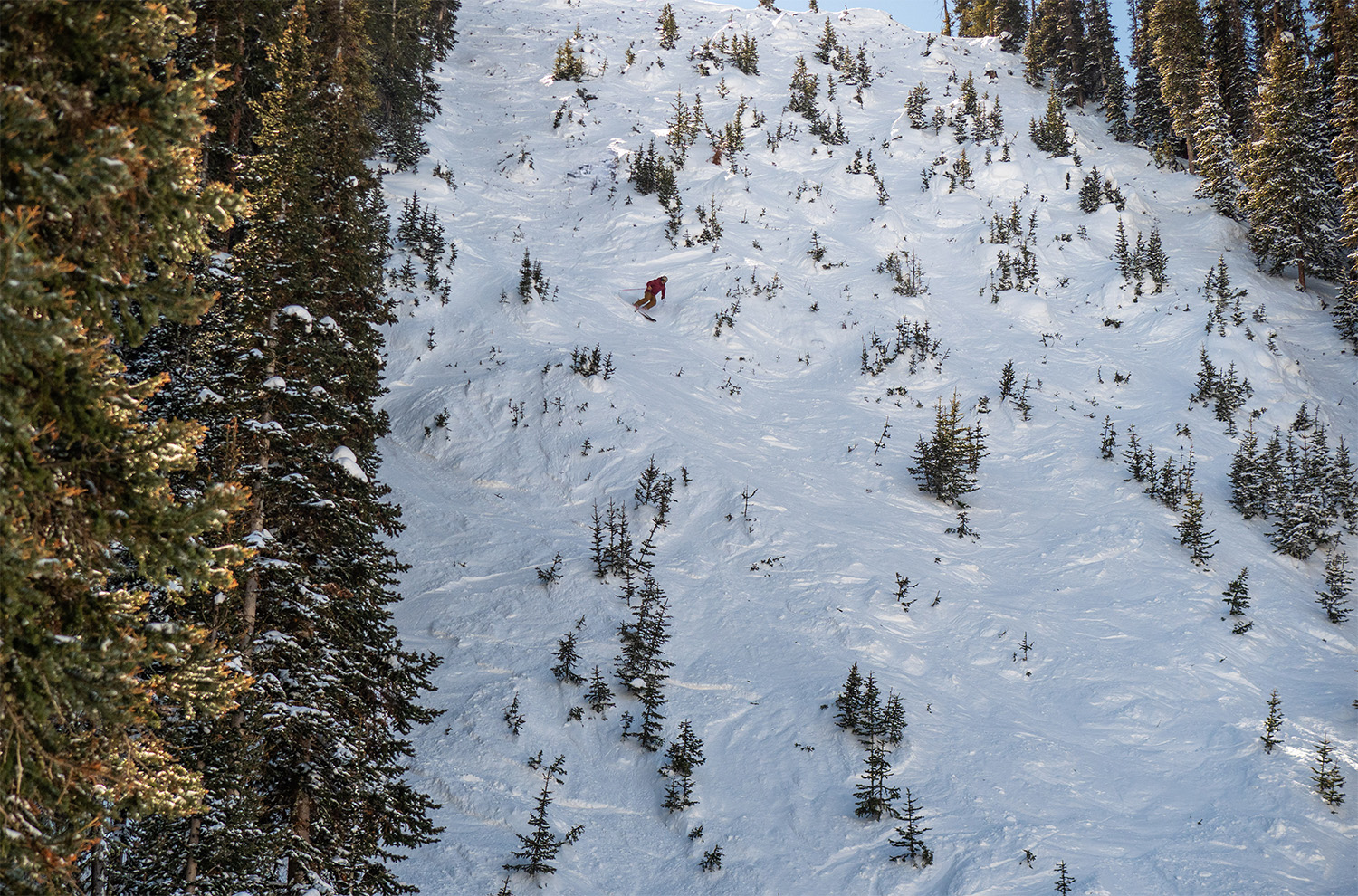
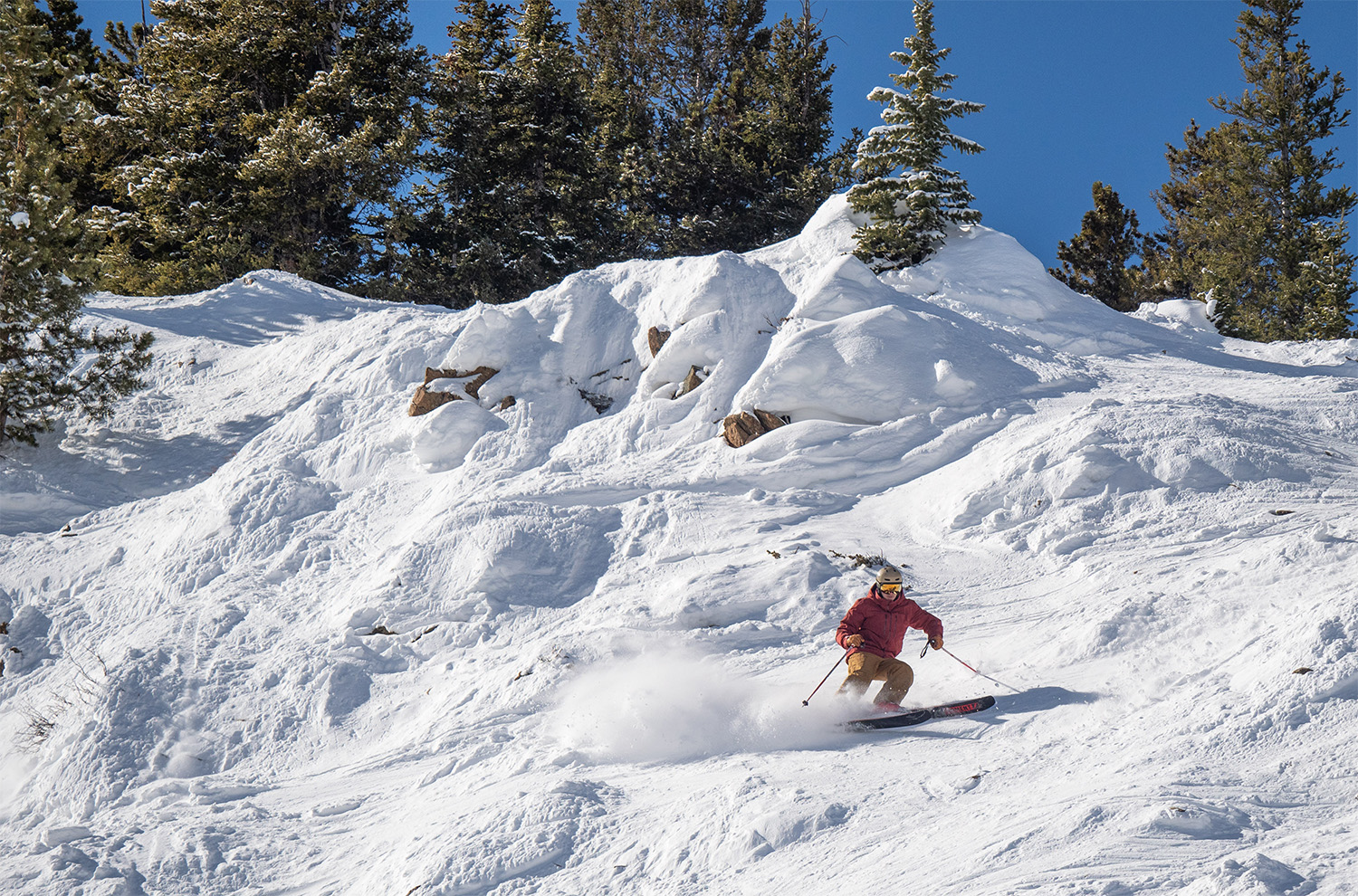
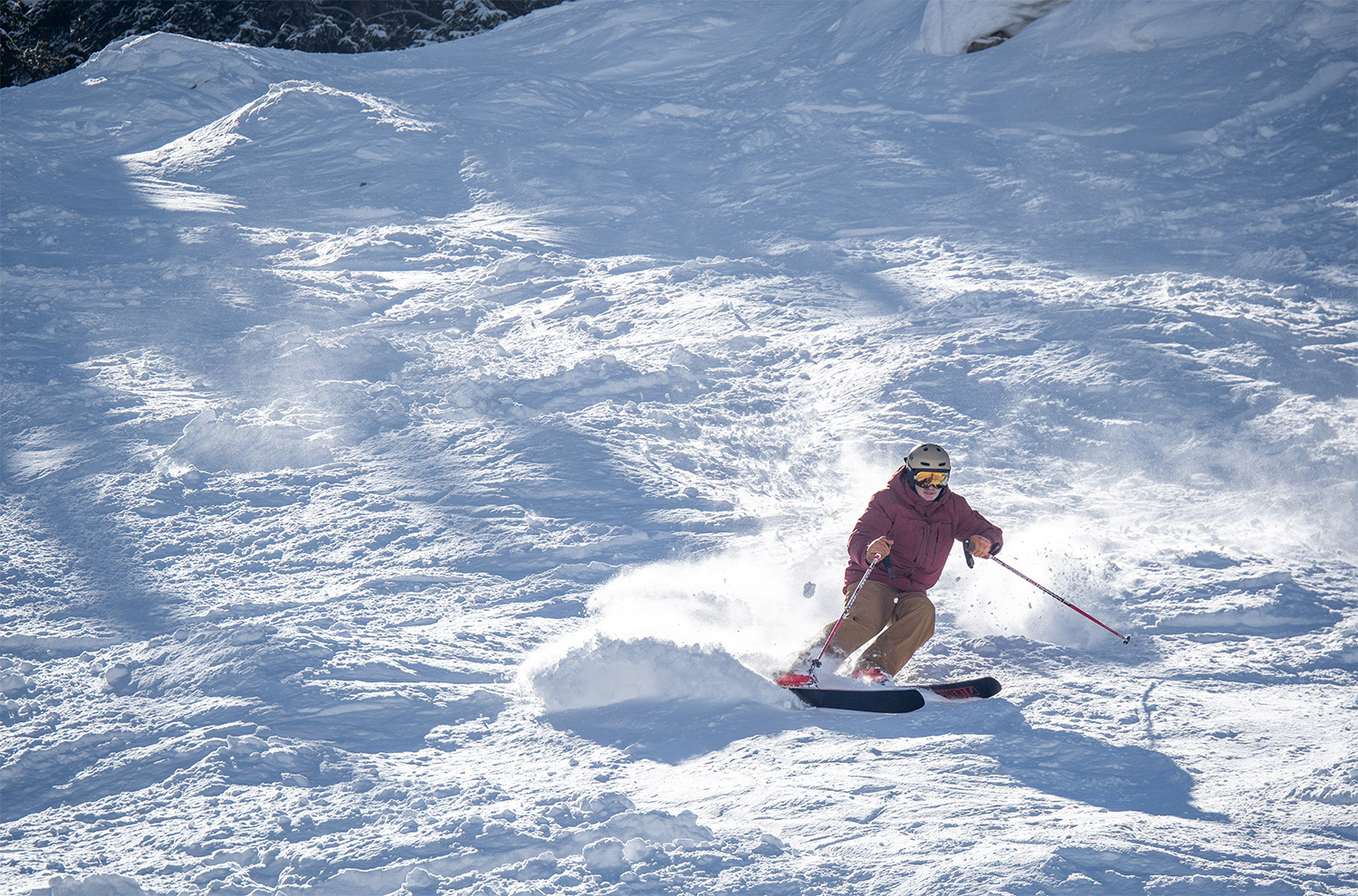
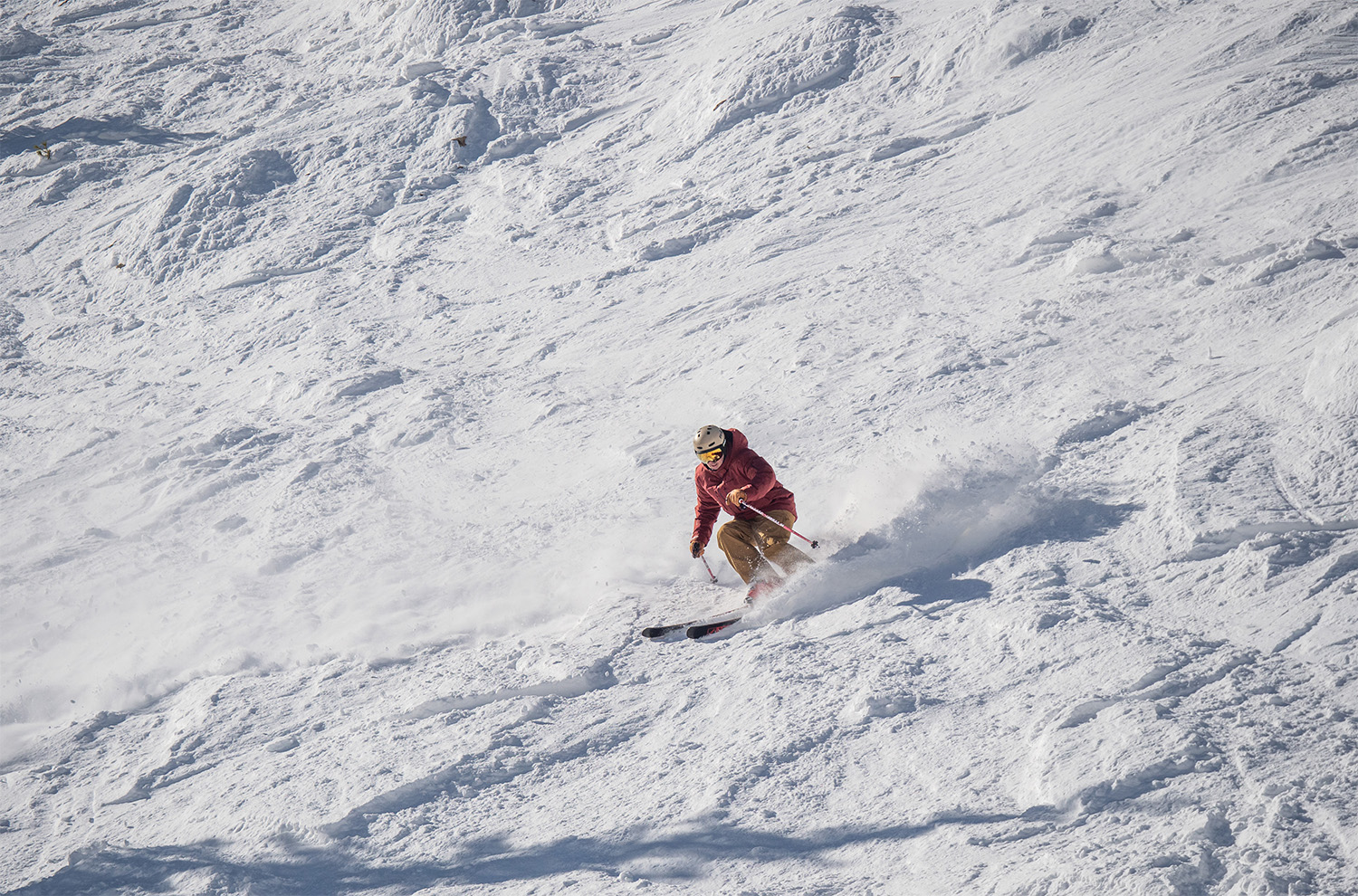
I am losing track here: Was the change made for 21/22 or as it sounds in Moments description 20/21?
They updated the construction for 20/21, and then that same construction carried over for 21/22. So the 20/21 and 21/22 skis are essentially the same.
hah until I read Luke’s reply to your comment I was confused too thinking moment flagrantly lied to me when they said the 21/22 wasn’t changing except graphics, which caused me to buy the 20/21 they had in the shop.
But they didn’t lie and I love the ski.
FYI to people reading – Jonathan talks about liking the way older heavier Bibby->Wildcats: for me at 170cm 140lbs expert focusing on tight tree skiing the 174 wildcat was clearly too short and unstable, 179 perfect, 184 a bit too heavy / long.
I was also really surprised when I skied the 179 wildcat the day after the 179 wildcat 108 at how much more stable the wider wildcat was, and that it gave up far less maneuverability than I expected
You guys get a 190 too for Jonathan?
Super curious what size I should be looking for in this ski; I’m 5’9 (175cm) and 180lbs. Currently skiing the Head Kore 111 184cm for pow and soft snow days and find they’re too stiff for my liking and hard to get them around in tight spaces without high speeds. I’m an aggressive/advanced skier. Should I be looking at the 184cm or 179cm? Cheers!
5/8 160# and i love the 184, considered even going to 190 but it has larger dimensions overall by 2mm, moment advised against the upsize.
Hey Josh. 184 for sure. You’ll find that you might want to mount a little rearward. Coming off the Kore you’ll want a little more up front. FYI. I’m same size as you and have the 108 in 190 and don’t think it’s too big. They measure a little shorter also.
Could y’all do a review of the Wildcat 101s? There’s a lot of talk around them and we’d love to know what you guys think.
When’s the full review coming out?
5-6 200 lbs. 48 years old. But pretty fit and strong advanced skier. Trying to decide between 179 and 184. Using this mostly as powder ski in quiver ? Suggestions ?
Hey Jeffrey, we could use some more info. Shoot us a note in the Personalized Gear Recommendations section of the Blister Members’ Clubhouse, and we’ll get back to you as soon as we can.
I’m 6′ 155lbs, strong advanced skier. currently on soul 7 180 and Nordica enforcer 177. debating between 184 and 190 but afraid 190 will be too much in the trees. never had a designated pow ski before and would like something that floats, turns sideways quickly and can be nimble for trees, but also handle chop (I suppose everyone is looking for this ski?). like to ski fast but tight trees are my weakness. racing east coast background but ski mostly mt hood now. also been looking at 4frnt renegade, and qst blank. sorry lot to unpack here. thanks! also intrigued by black ops…
Luke mentioned ‘not my first choice for forest jibbing in Japan’. Not so much the jibbing, but what *would* be your choice for Japanese forests?
Cheers!
Something fatter and softer.
Ghost Train….
Curious to hear how the Wildcat 108 compares to the women’s Bella? I haven’t seen a review on that ski in a long time, maybe this is the year?!
They changed the core from aspen / ash to poplar / ash for 22/23!
Super excited about that new 196cm size… definitely puts these on the map for me now. Will the deep dive be updated to compare to other similarly sized skis? Have any of you guys even gotten a chance to try them yet?
Do you guys think you’ll get your hands on the newly dropped 196 WC? I’m one of those who always inquired about a longer WC as I have the sender squads and the 190 WC but feel like the 190 certainly has some room to move up to 194ish
It’s going to be available to demo at the Blister Summit
Any remarks on the 196s?
Look forward to hearing about the longer lengths, not because they would work for me but keen to hear where it stands in Jonathan’s affections now it’s heavier again. The review above feels positive still, but not as much of a standout ski as previously (at least that’s how I interpreted it) Wonder whether time is catching up with it or rather other ski manufacturers have been improving their offerings incrementally
Do these ski firm snow better than On3p Woodsman 110, even though they are wider?
It is a crime against humanity that Ellsworth has not reviewed the 190 length yet
I have the 2018 Bibby in a 190. Took me a while to get used to them coming off of more directional skis (Blizzard Bodacious 196, Atomic Atlas 192). Once I learned to back off the shovel a bit and roll my ankles more, I fell in love. At my size (6’5″, 220 lbs), they are incredibly nimble in the tree pow, and I think that they carve exceptionally well, if not in an exciting manner. Way easier than my ARGs on twisty, luge-track outs, too.
Just out of interest, can you add where the reserve series ski that Moment calls the OG fits in the chronology please? Given it’s called OG presumably before the Bibby?! You refer to an OG Bibby here, but that seems to be a heavier ski. Was the OG originally called a Bibby or something else? Any chance you will be getting on the OG, or did you already at Summit 25?
ready to pull the trigger on that 196, just waiting for a different graphic lol